Despite years of blog posts depicting “why email marketing is dead” and other click-bait style titles, the humble email remains one of the digital marketers most powerful tools. Whilst social media gave us a multitude of alternative channels to promote our messages and content, nothing can replace the simplicity of subscribing to email updates. Information that we request, sent at regular intervals into our inbox, with the option to either alter that information or unsubscribe at any time.
Rather than being replaced, email marketing has evolved.
Better targeting through choice
By using sophisticated marketing automation technology, financial marketers can now give email subscribers more options to manage their own preferences. Less email blasts and more options to get the right content to the right people when they want it. And now, with the advent of GDPR in Europe, it’s become crucial to make the opt-in and opt-out process for email marketing as simple and transparent as possible.
Using mobile to improve email
The explosion of mobile phone adoption has definitely contributed to the email marketing resurrection. We all check our phones many times a day and push notifications inform us instantly of new messages. Making those emails mobile-friendly by using responsive design, as well as A/B testing the right amount of content and subject lines, has also improved email marketing.
8 Examples of fund manager email subscription pages
We decided to take a look at some examples of how fund managers are dealing with email subscription/preferences pages on their websites. Fund managers can generate a lot of content, particularly fund documents, so it’s interesting to see how they allow investors to manage those emails and preferences.
In no particular order
State Street
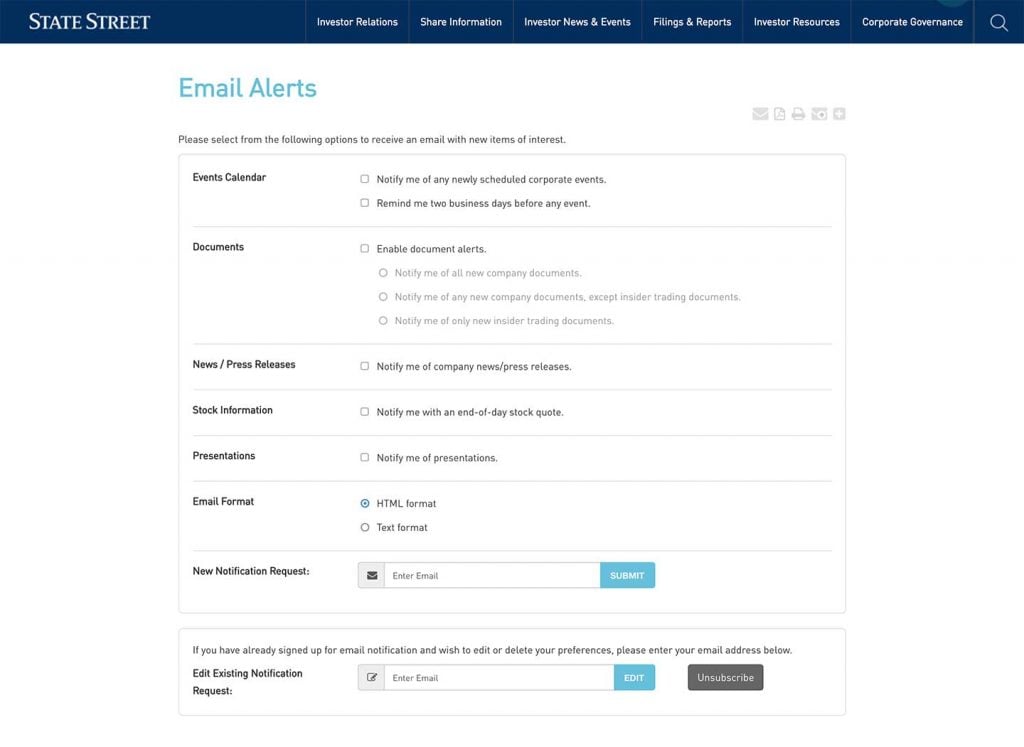
State Street offer a range of email options including events, documents and Stock alerts. You can also enter your email here to edit your preferences or unsubscribe easily. Key Takeaway: Clear and simple design.
New York Life Investments
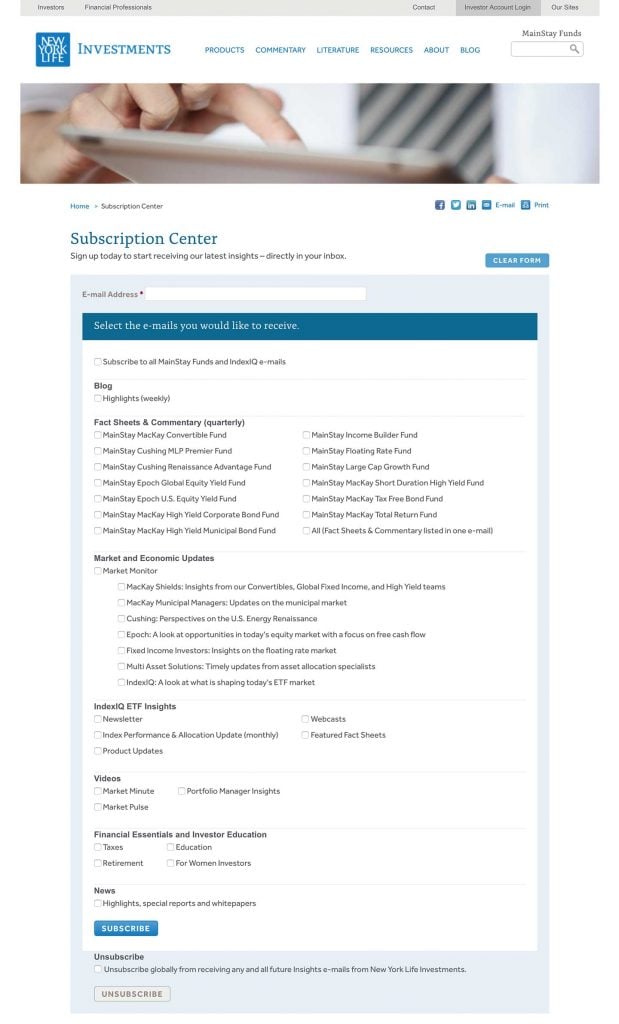
New York Life Investments offer various email subscription options, with a heavy focus on their fund factsheet range as well as their macroeconomic updates. Key Takeaway: granular level of content options.
Legal & General Investment Management
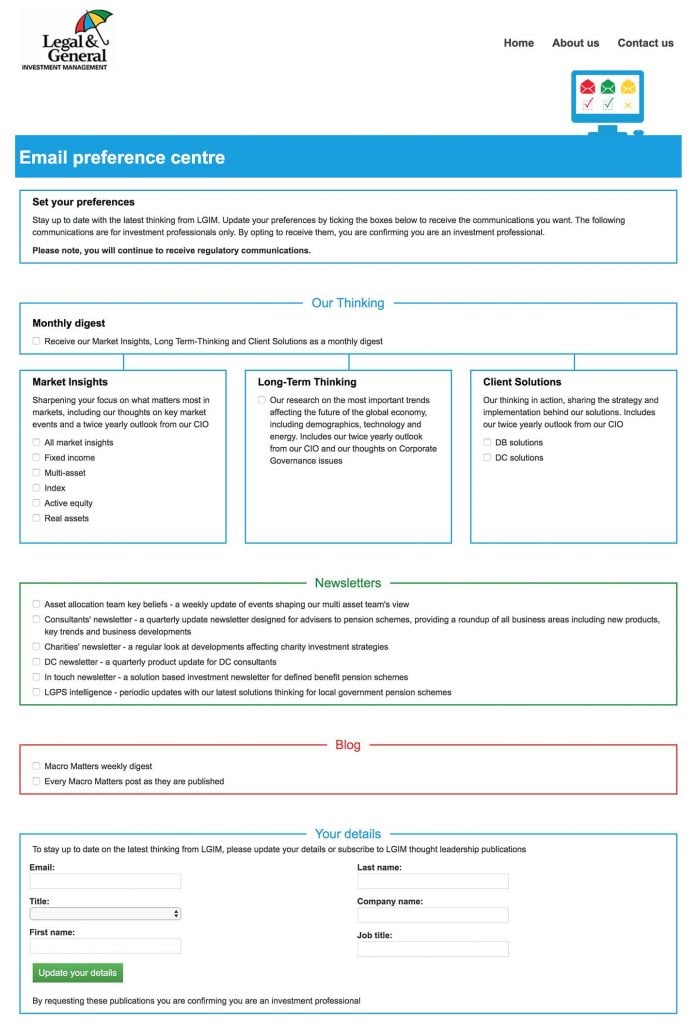
The LGIM email preference centre clearly divides out the options available across their market insights, regular newsletters and blog content. Key Takeaway: Clear range of options with detailed descriptions.
J.P. Morgan Asset Management
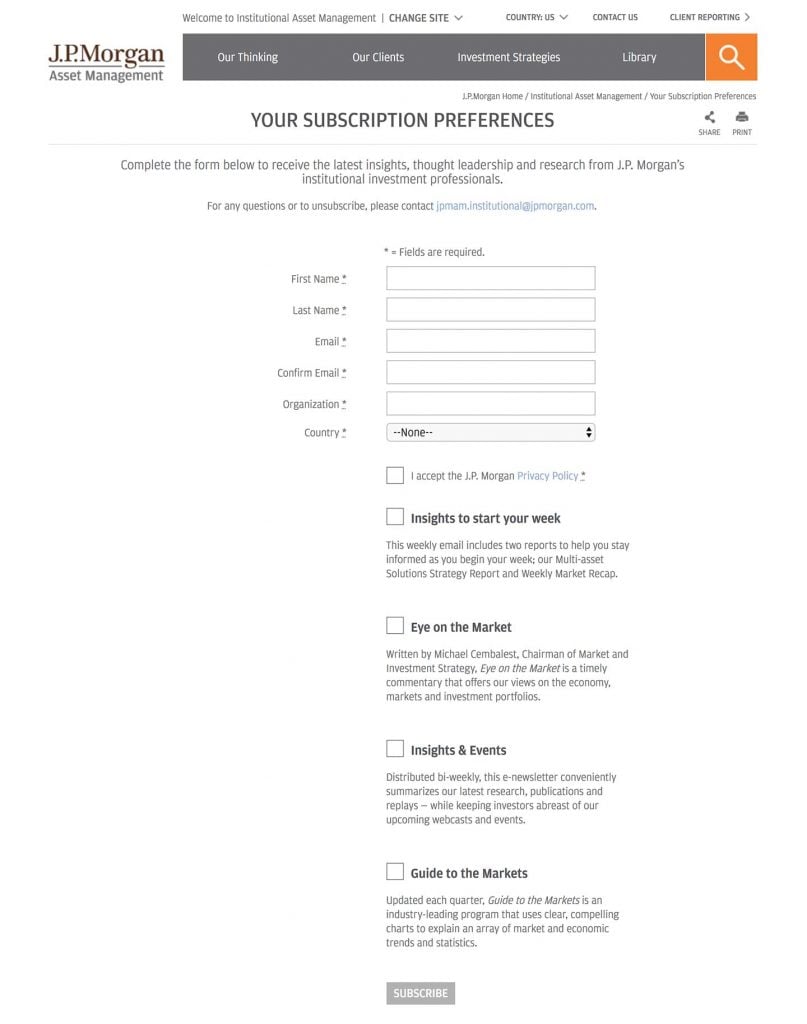
J.P. Morgan’s institutional email subscription page offers simple and clear options to their thought leadership and research. Key Takeaway: Clear and simple options.
Deutsche Bank
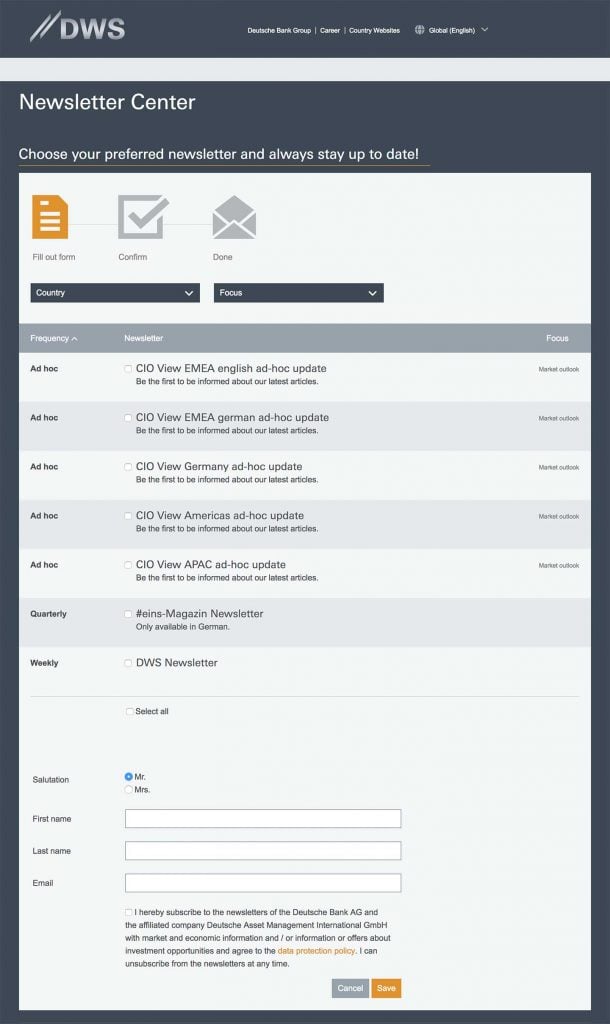
Deutsche’s ‘Newsletter Centre’ gives investors options broken down by frequency, type and focus. Key Takeaway: A multi-country selector allows for emails concerning 13 different countries.
Credit Suisse
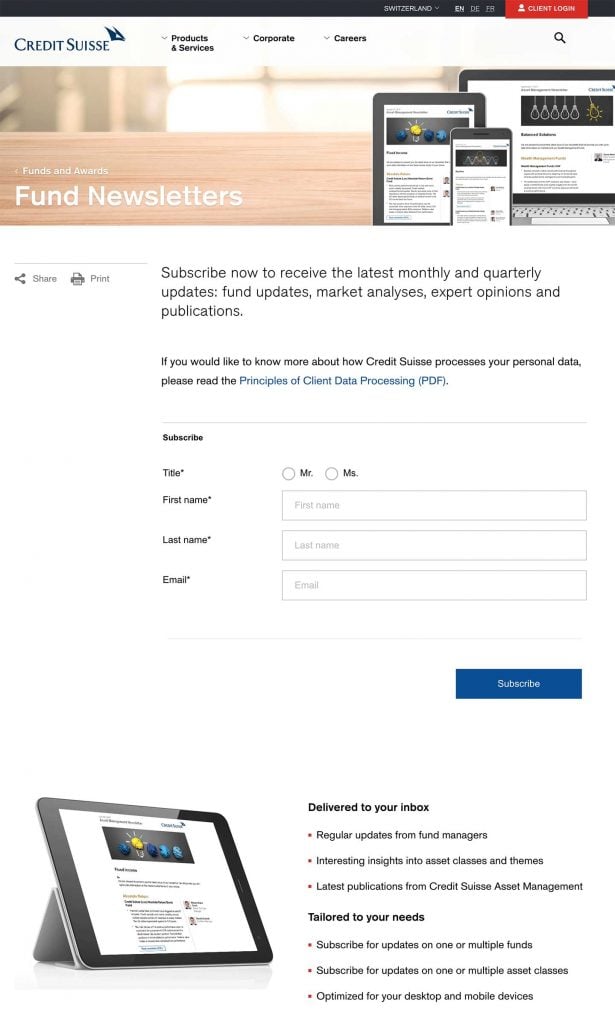
Credit Suisse’s Fund Newsletter sign-up page offers little in terms of options, but does give people an idea of what a typical email looks like, something which many fund managers do not. Key Takeaway: A clear link about data processing points to a recent update since GDPR.
BNY Mellon
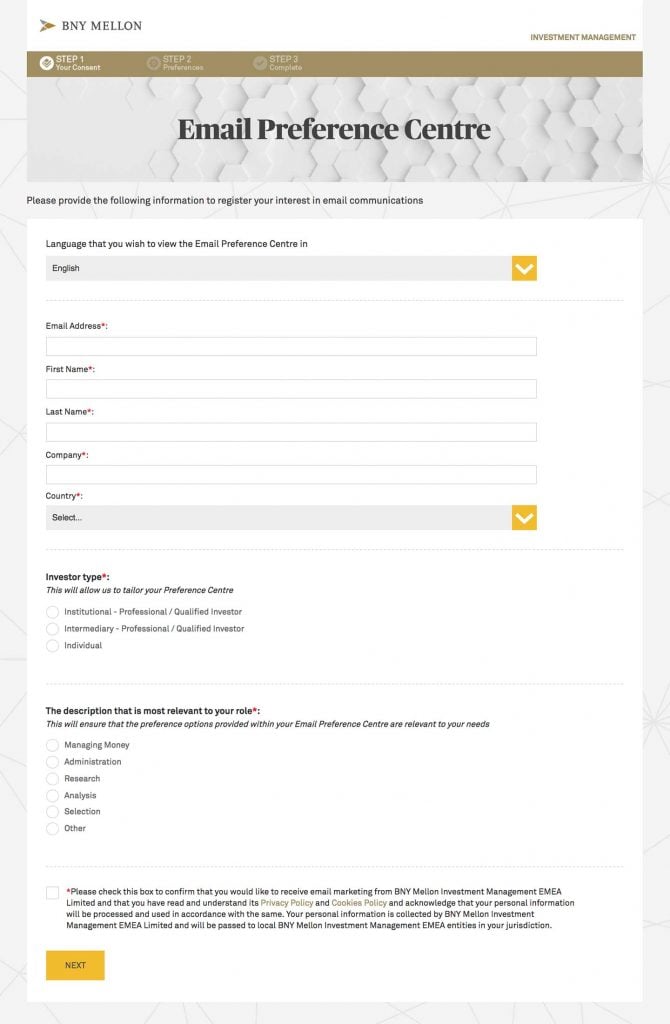
BNY Mellon’s email preference centre allows for multiple languages, investor types and divides the process into clear steps. Once your email is confirmed, a large number of Market Insight and Intelligence options are available as well as Investment Updates and Fund Literature updates for every fund. Key Takeaway: Huge range of options across entire fund range.
BlackRock
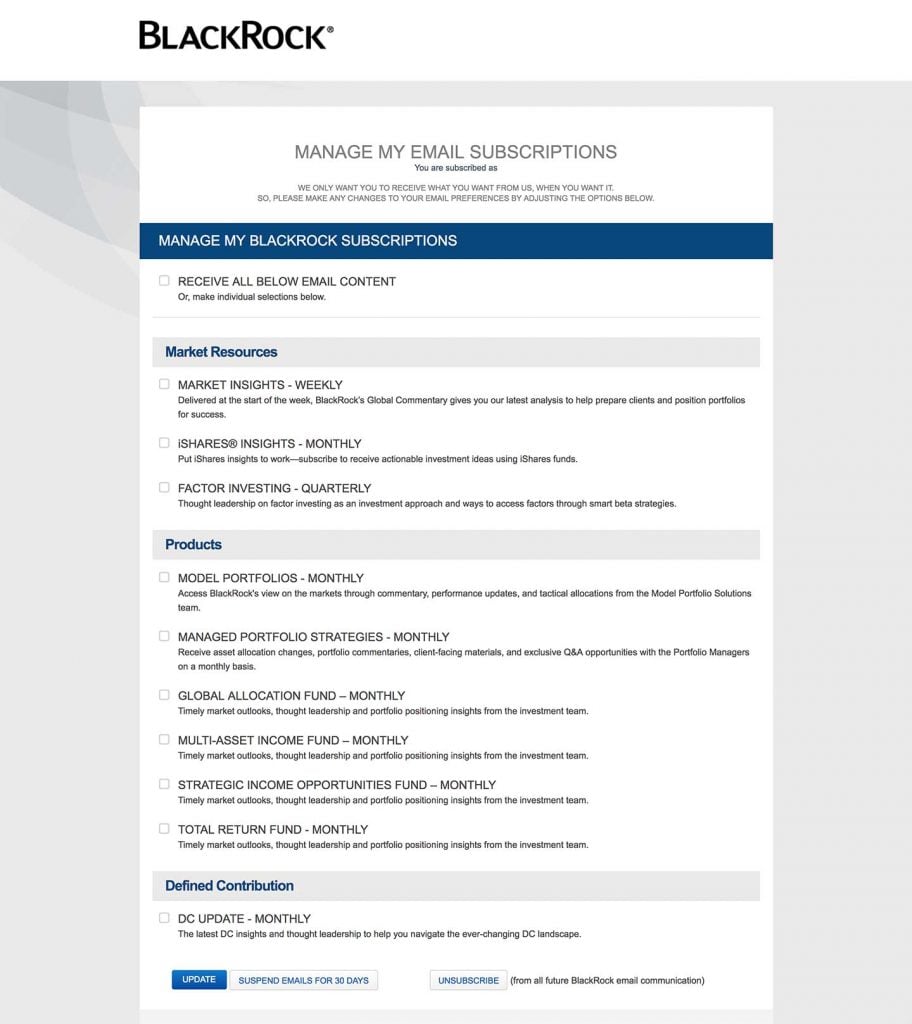
BlackRock’s email subscription page allows for a simple ‘all in’ option or a clearly defined granular option across their market resources and product range. Key Takeaway: an interesting ‘suspend emails for 30 days’ button offers an alternative for those looking to unsubscribe.
So, in summary, there are some interesting features and options are available to investors when it comes to funds. Allowing investors the choice to drill down to updates about specific investments is an incredibly powerful way to stay in touch with your audience, without filling their inbox with irrelevant information.



